
The Chachapoyas people, also known as the Cloud Warriors, were a thriving civilization in Peru, long before the Inca. They constructed the massive pre-Inca ruins of Kuelap, spelled Kuélap in Spanish. This relatively unknown fortress hides in the high Andes Mountains of northern Peru, far off the beaten path and widely under the radar.
Nevertheless, this fortress is in the running to become one of Peru’s top archaeological sites. Kuelap could certainly become the next Machu Picchu. Get off the beaten path and visit one of Peru’s most fascinating destinations before the crowds!
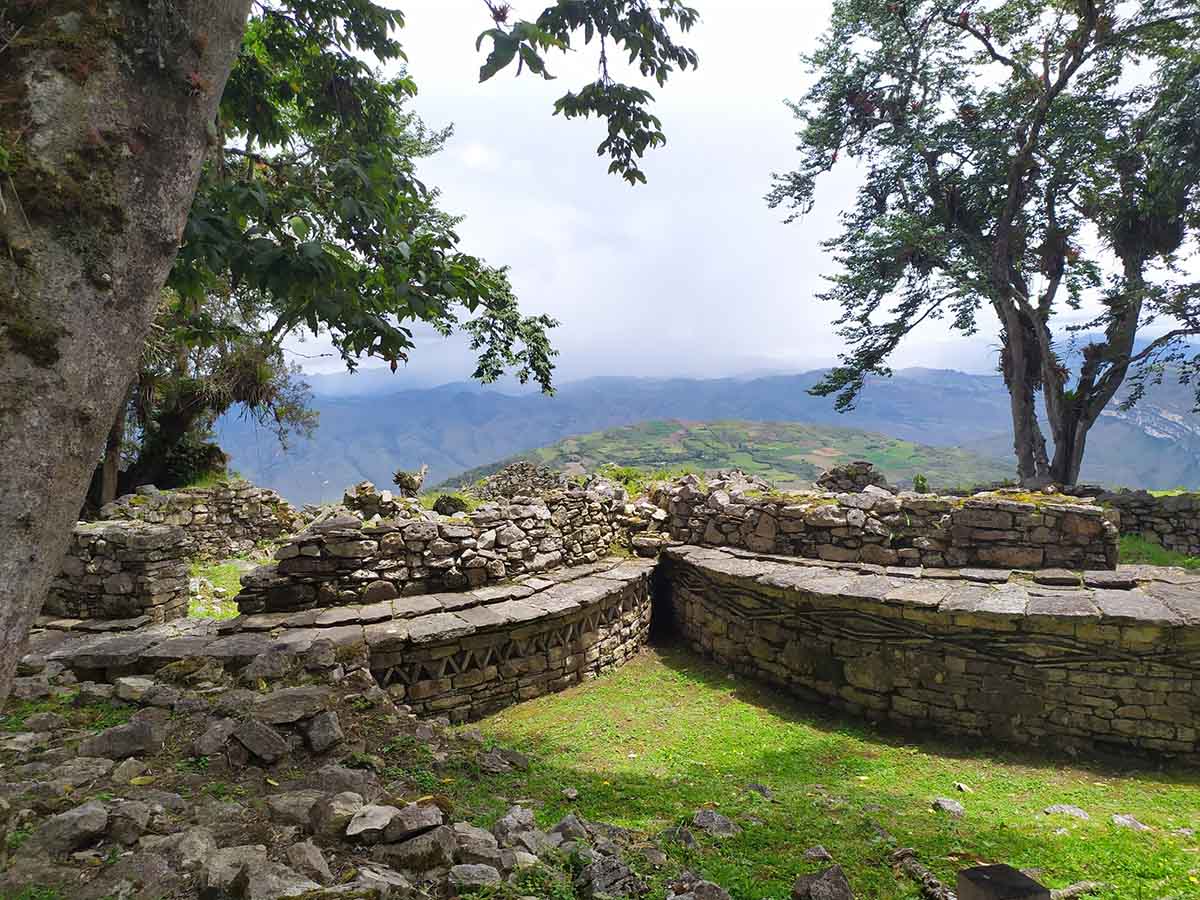
Intricate stone work on the exterior of the round houses of Kuelap. Photo by Mikey Blount of Peru for Less.
The occupation of this area began 2,400 years ago, around 400 BCE. Built by the Chachapoyas civilization, the majority of the Kuelap Fortress we know today was built between 900 CE and 1100 CE. However, certain areas of the ruins today date back to the 6th century CE or up until the Inca conquest of the region in the 1400s.
Kuelap Fortress was a political center for the pre-Inca society known as Chachapoyas. This society flourished from roughly 900 CE to 1400 CE. Nestled on a mountaintop above the Utcubamba River Valley in northern Peru, the archaeological site is about 1,968 feet (600 m) long and the outer walls tower about 62 feet (19 m) high.
The native Chachapoyas people occupied the site until the Inca Empire conquered the area around 1470 CE. Although the Inca tried to wipe out the Chachapoyas during their invasion, they were unsuccessful. A genetic study published in 2017 found that the indigenous people living in the region today have the same Chachapoyas DNA of their ancestors.
The Spanish conquered the area around 1570. Soon after, the site was abandoned for hundreds of years. A judge from Chachapoyas rediscovered the site in 1843, but it remained off the mainstream radar until the 1980s. Archaeologists continue studying the site today.
Kuelap is currently a UNESCO World Heritage Site candidate. If accepted, the inclusion of the site will help it gain international recognition as well as support for infrastructure development projects in the region.
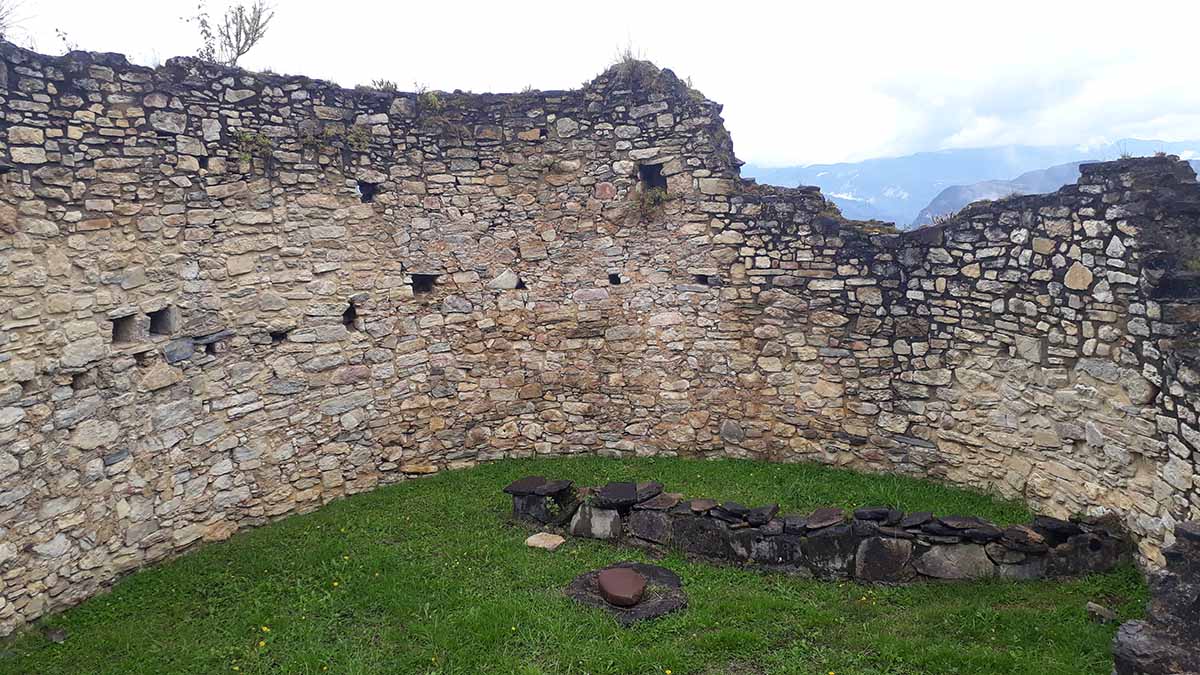
Stone walls of Kuelap have stood for centuries if not millennia. Photo by Liz Sperling of Peru for Less.
Weather in Kuelap is split between two seasons: rainy and dry. Weather wise, the best time to go to Kuelap is during the dry season, from May to September. You can expect mostly sunny days and limited rain. Temperatures are cooler, but the high altitude sun is still strong.
However, the rainy season, from October to April, can be a pleasant experience all the same. Temperatures are typically warmer, but chances of precipitation are higher. A light mist adds an extra layer of mystery and magic to the Kuelap Fortress, making for some unique photos. In addition, the rain means the nearby Gocta Falls are at their fullest, even more powerful and breathtaking.
There are many more domestic than international visitors. Because of this, Kuelap tends to get busy on long holiday weekends. Take a look at the Peruvian holiday calendar here to see the official holidays. However, keep in mind that even on holiday weekends, the number of visitors at Kuelap still pales in comparison to Machu Picchu on any given day.
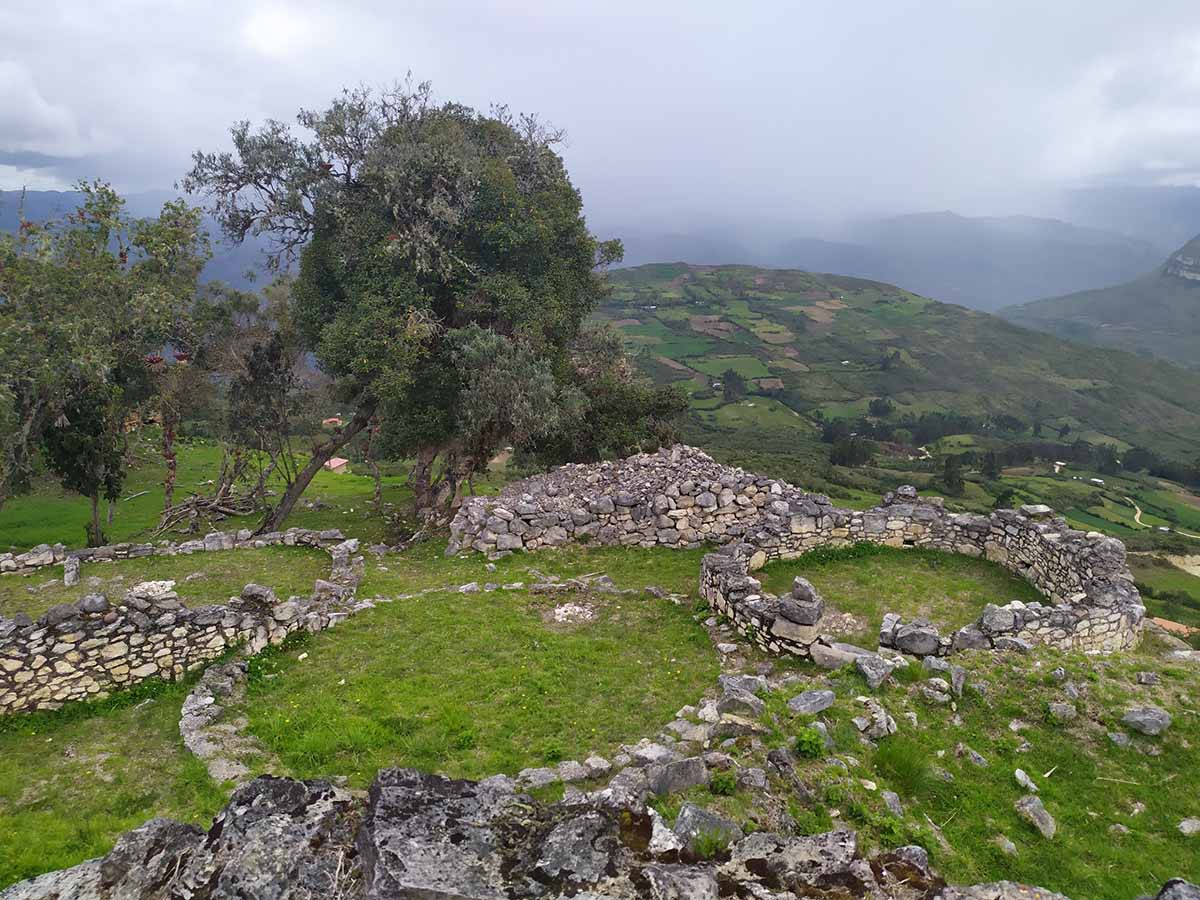
Circular stone buildings are quintessential of Kuelap Fortress. Photo by Mikey Blount of Peru for Less.
To reach Kuelap, you must first travel to the Amazonas Region. There are four main routes to the area: through Tarapoto, Jaén, Chiclayo, or directly to Chachapoyas. The most common and popular route is from Jaén to Kuelap.
Keep in mind that you typically need two full days for travel in and out of the region. While you may have some time in the evening upon arrival or morning of your departure, it is not sufficient to visit Kuelap the same day as a flight in or out.
Amazon Rainforest Tours:
There are a handful of daily flights to Jaén (JAE) from Lima (LIM). The flight lasts about 1.5 hours, and typically arrives in the afternoon or evening. From the Jaén airport, the main plaza of Chachapoyas is about 4 hours driving away and our top hotel pick, Gocta Andes Lodge, is about 3.5 hours away.
With multiple daily flights from Lima, flying to the jungle city of Tarapoto (TPP) is another option to reach Kuelap. After the hour-long flight, you will need to stay overnight in Tarapoto before embarking on an 8-hour drive the next morning. On the way, you will stop at various locations in the Alto Mayo Protection Forest and experience the biodiversity of the Peruvian jungle.
There are several daily flights from Lima to Chiclayo (CIX), another top destination in northern Peru. From Chiclayo, you can head to Chachapoyas on an overnight bus ride. This journey takes around 10 hours. While you can head to the Kuelap ruins the same morning of arrival, you will probably be tired after a bumpy overnight bus ride. We recommend visiting Kuelap with fresh eyes, so if you have time, consider waiting until the next day for your Kuelap tour.
While the Chachapoyas airport (CHH) is the closest to Kuelap, flights are only available two or three times per week from Lima. The flights are offered by Atsa Airlines, a small national airline. This route uses small planes, like the Bombardier Q400, that hold around 76 passengers, whereas the flights to Jaén or Tarapoto use larger aircraft. The airport is 15 minutes from Chachapoyas’ main plaza, or an hour from Gocta Andes Lodge.
There is discussion to expand the Chachapoyas airport so it can receive more flights and larger aircraft. This would give travelers better and easier access to the area. The plans are supported by a number of major airline operators. The government is set to release a master plan for renovations in October 2020.
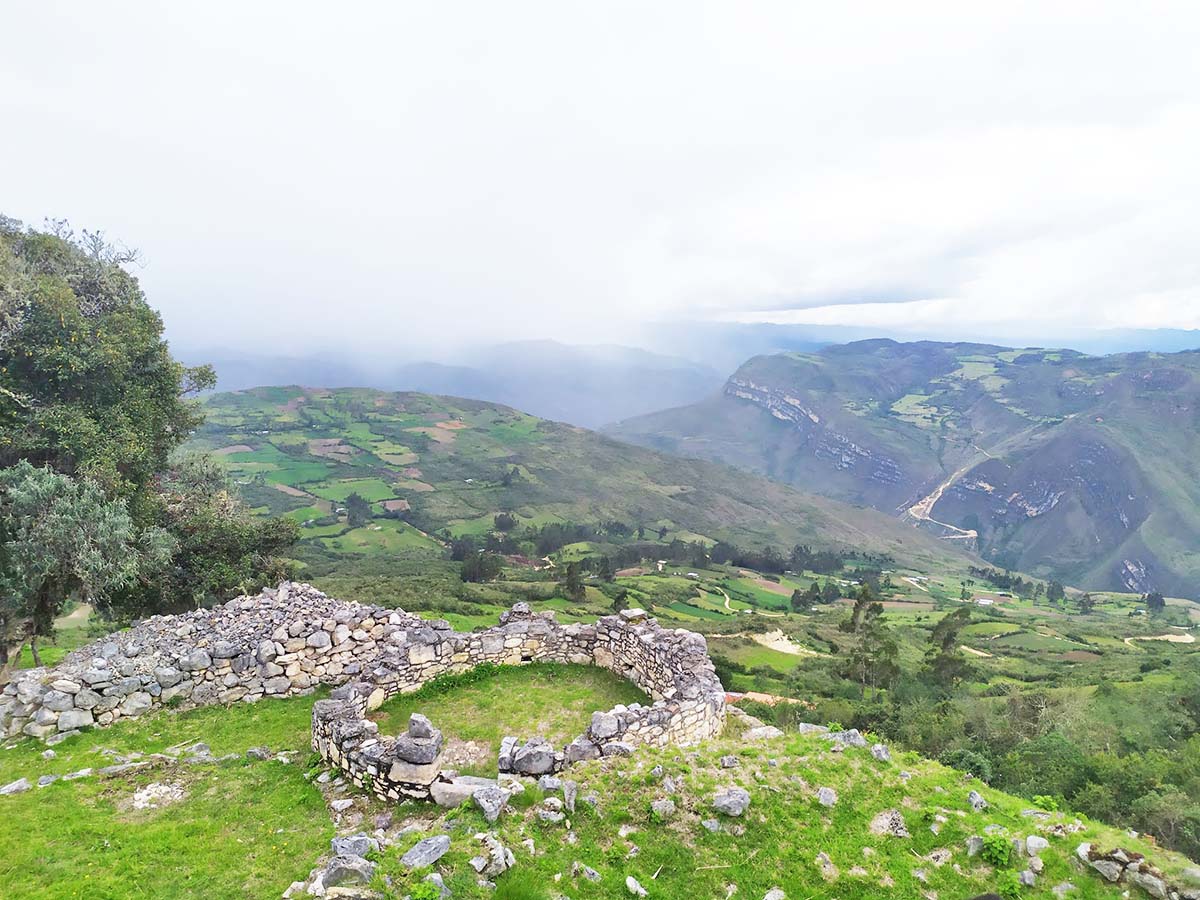
Circular stone ruins of Kuelap. Photo by Mikey Blount of Peru for Less.
While most tours include transportation from and to your hotel, it is important to know the logistics of how to get to Kuelap before embarking on your tour.
Tours to Kuelap take a full day, starting in the morning at around 8 AM and lasting about 8 hours, depending on where you are staying. From Chachapoyas or hotels nearby, you are a drive, cable car ride, and short walk away from the fortress. To reach the Kuelap cable car station, the first step is to drive one hour from Chachapoyas or 1.5 hours from Gocta Andes Lodge.
The recent installation of a cable car system has greatly improved the ease of access. It carries visitors from the town of Nuevo Tingo to an area that is a 30-minute uphill walk from the archaeological site. Horses are available to hire for the walk from the cable car station to the entrance of Kuelap if necessary.
The Kuelap cable car system stretches about 14,435 feet (4,400 m) up the mountainside, taking about 20 minutes each way. This new improvement cuts out 90 additional minutes driving on a winding dirt road. Keep in mind that the cable car is open Tuesdays through Sundays from 8 AM to 5 PM. If traveling to Kuelap on a Monday, additional driving time should be considered.
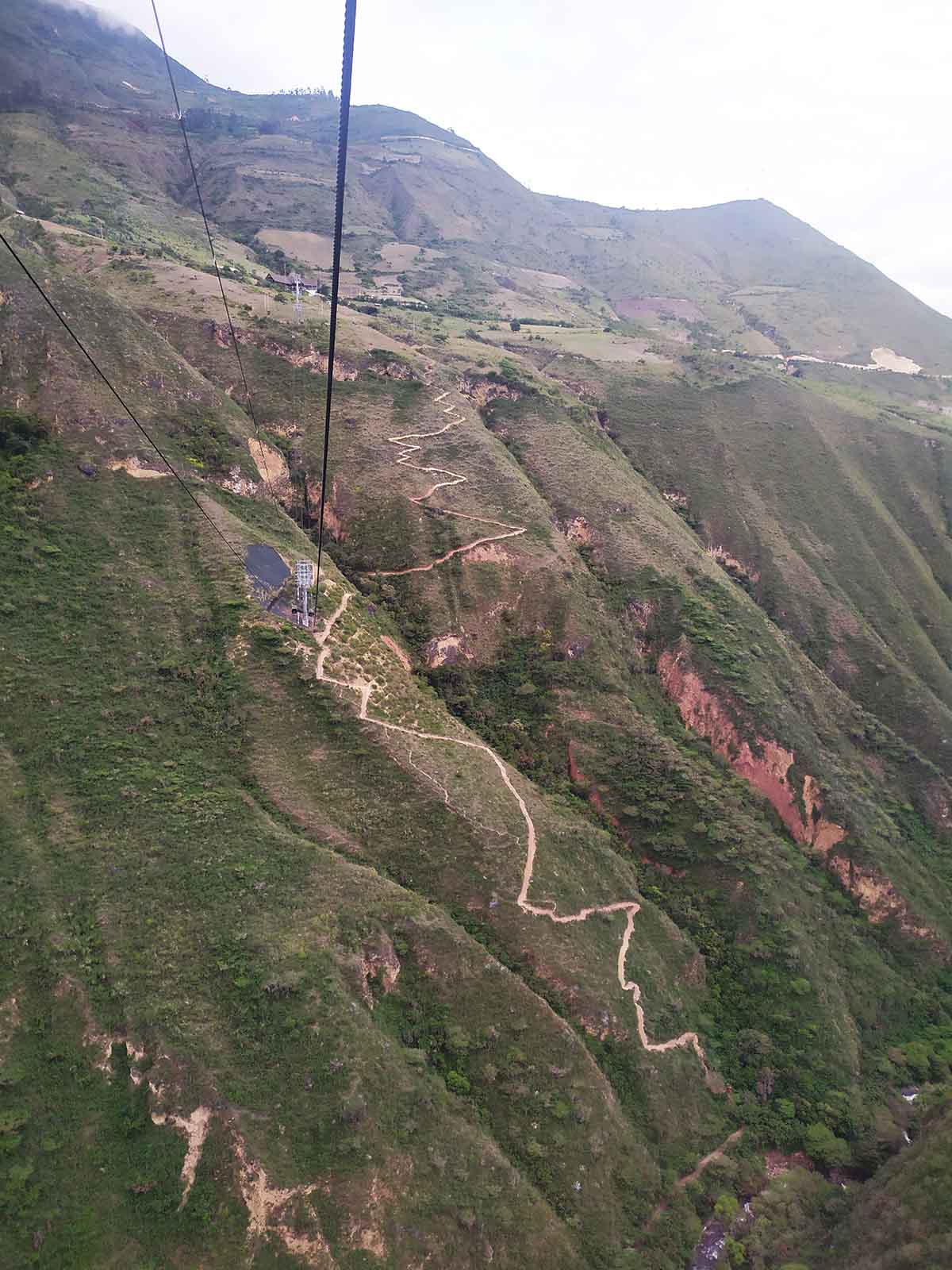
The Kuelap cable cars passing through the mountains. Photo by Mikey Blount of Peru for Less.
Adventurous travelers can also hike to or from the fortress on a 6 mile (9.8 km) trail. In place of one way on the cable car, the uphill hike to the fortress takes about 4.5 hours, ascending 3,940 feet (1,200 m). Going downhill is quicker and easier, but still tiring.
Five rest points along the trail offer much appreciated shade and seating, but be sure to bring enough water and snacks to last the duration of the hike.
Three or four day treks to Kuelap and other sites nearby are available for the super adventurous.
While the journey to Kuelap is rather complicated, once you arrive, you quickly realize it was worth it. Touring this ancient site with a local guide illuminates the unique history and culture of the Chachapoyas people. Tours typically last about one to two hours, with more time for individual exploration afterwards.
With certain areas dating back to the 6th century and others up to the 15th century, you can see the history of the Chachapoyas people with your own eyes. During your tour, there are several features of the Kuelap architecture to look out for.
The massive outer wall reaches a towering 60 feet (19 m) high. Over 400 round houses make up the majority of the site, distinct from any of the ruins of Peru. Geometric and figurative decoration on the exterior walls make the site all the more unique.
Beyond the spectacular ruins themselves, views from the Kuelap ruins make you feel as though you are hidden in the shroud of the majestic Andes Mountains. Small local restaurants offer a la carte menus for lunch or a snack before you head back to your hotel in the afternoon.
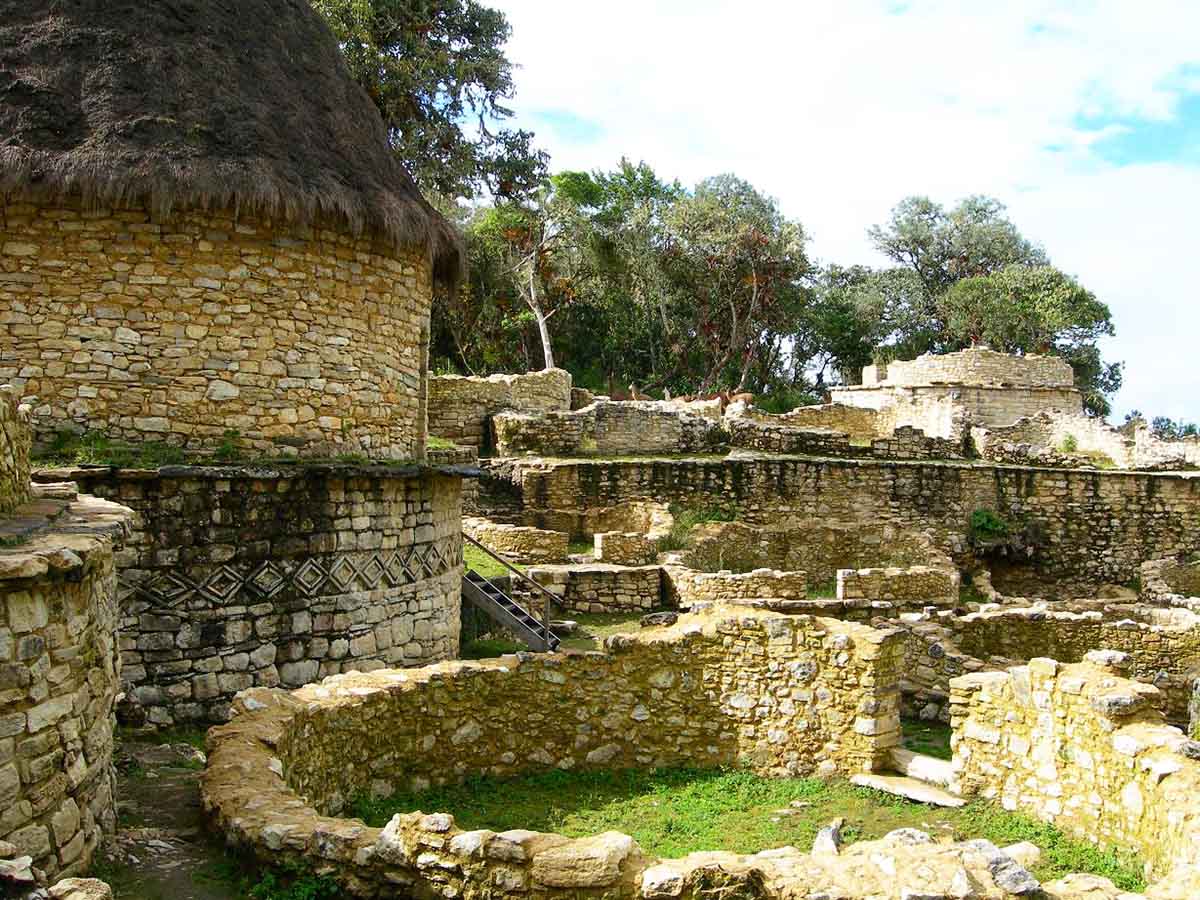
Several round houses in Kuelap have restored roofs. Image: File: Kuelap by José Porras, used under CC BY-SA 2.5 / Compressed from original
Come prepared for your Kuelap adventure! Be sure to bring the following items along for your tour.
There are several main points of interest in the Kuelap Fortress.
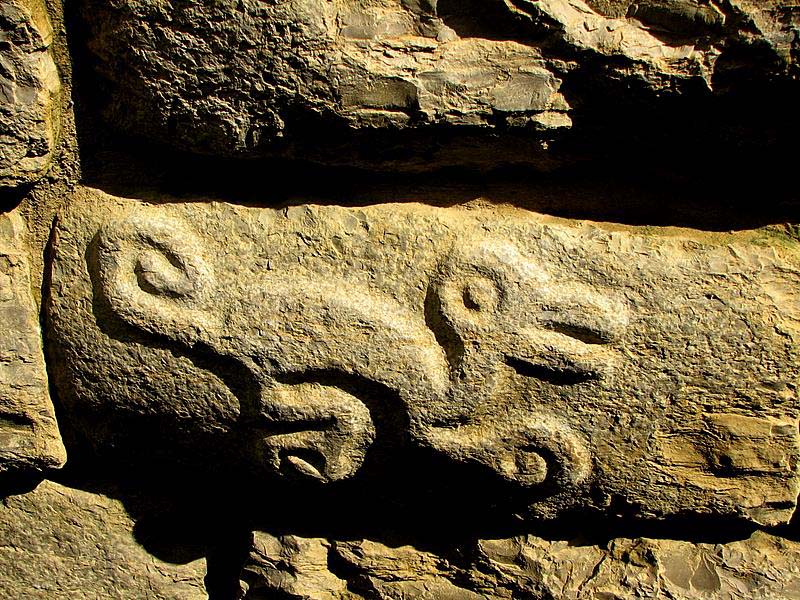
Stone carvings decorate the exterior of Kuelap’s many round houses. Image: Inscripciones en Kuelap 2 by Jorge Gobbi, used under CC BY 2.0 / Compressed from original
Keep in mind that this is a remote destination and there are no 5-star luxury options available. However, the 3-star Gocta Andes Lodge has everything you need for a comfortable stay. While there are quite a few lodges in the area, Gocta Andes Lodge stands out among the rest. An infinity pool overlooking the Gocta Falls in the distance is an impressive perk of staying here. Each room has its own balcony or terrace with views of the falls as well.
It takes about 1.5 hours to drive from Gocta Andes Lodge to the cable car station that heads to Kuelap. The Gocta Waterfall is a 3.4 mile (5.5 km) hike from Gocta Andes Lodge.
There are two other top hotels near Kuelap. The Gocta Natura Reserve is also close to the Gocta Waterfall. Kentitambo, also known as the Hummingbird Inn, is across the street from the Leymebamba Museum and closer to Kuelap. Budget travelers can find several small hotels and hostels in the area.
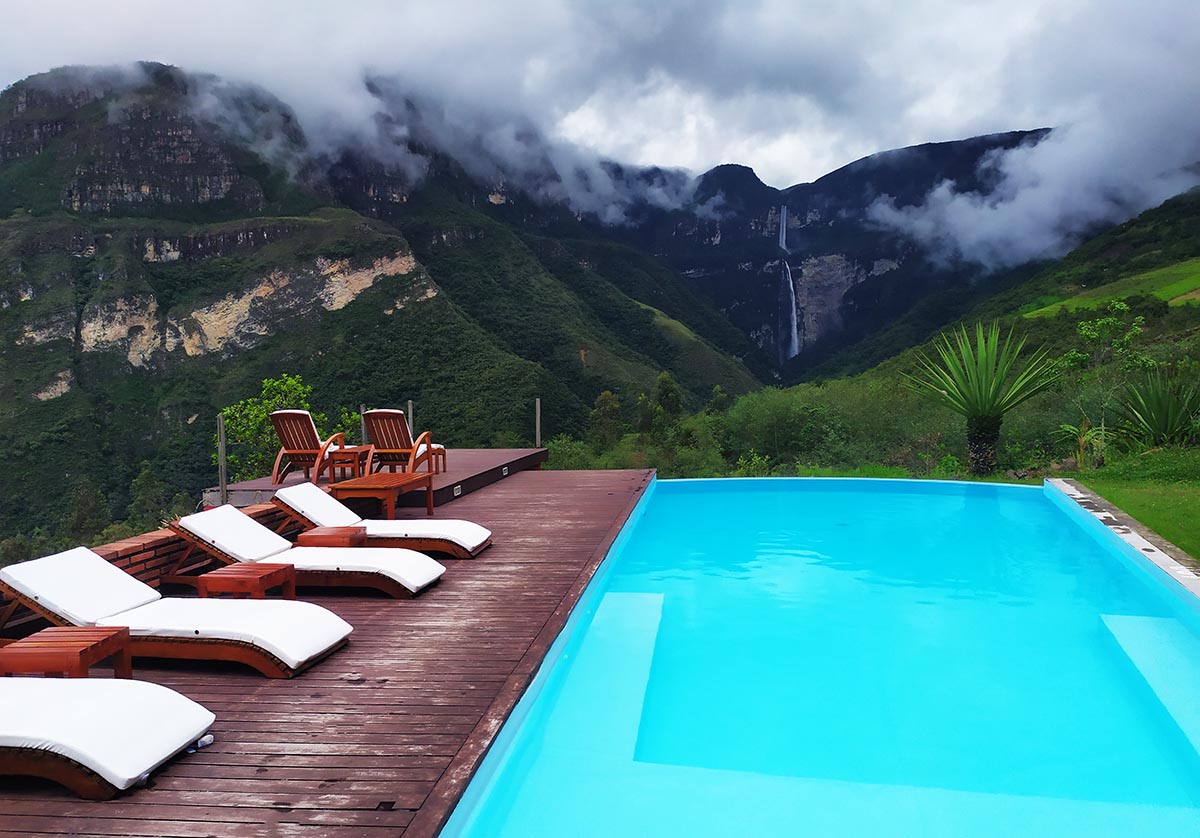
The Gocta Andes Lodge overlooking the Gocta Waterfall. Photo by Mikey Blount of Peru for Less.
While Kuelap is the main highlight in the area, there are several other impressive places to visit nearby. Consider adding any of the following options to your Kuelap travel package with an extra day!
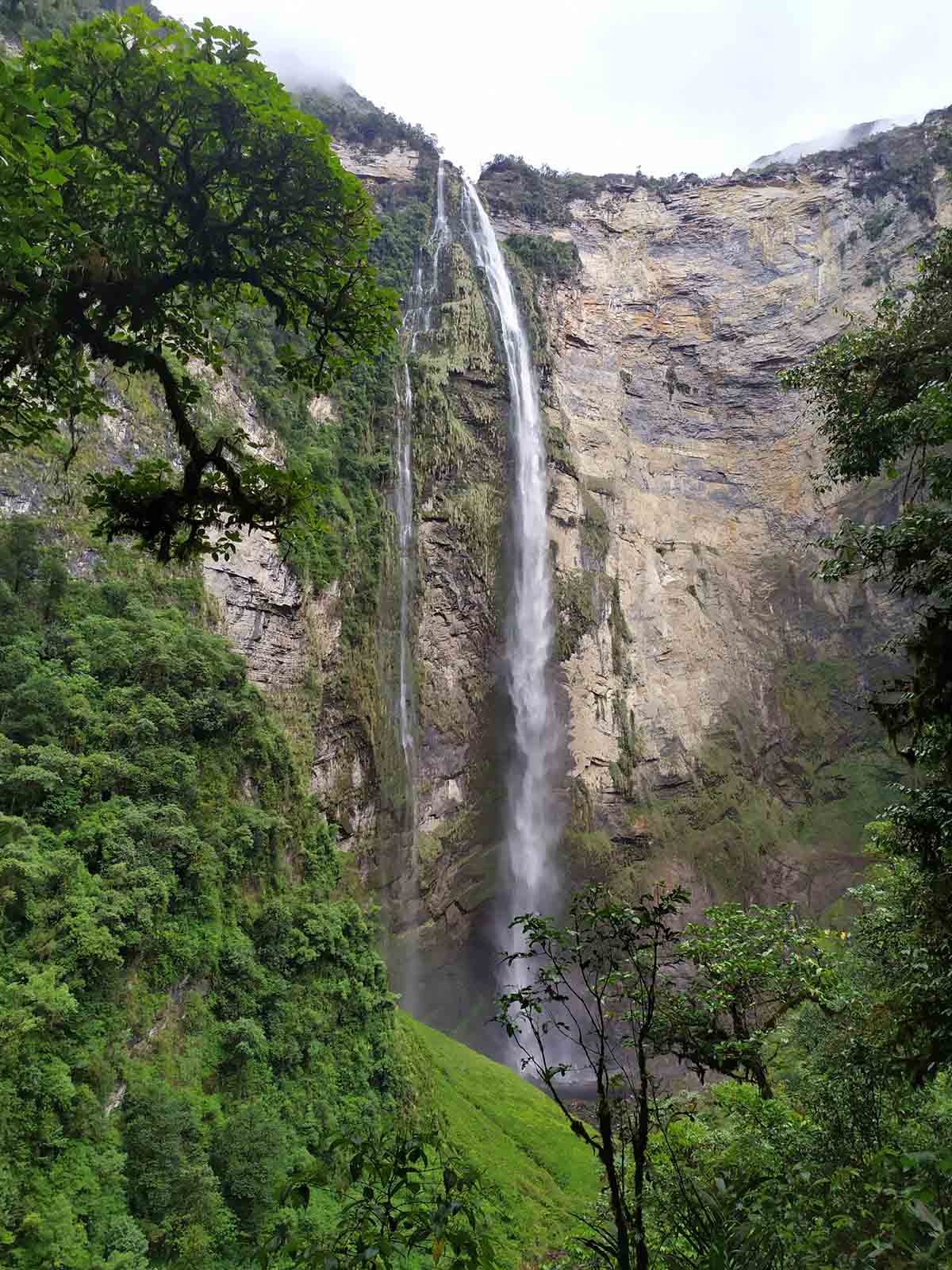
The Gocta Waterfall. Photo by Mikey Blount of Peru for Less.
Government officials in the Chachapoyas region are pushing for infrastructure developments to increase the popularity of the Kuelap Fortress. The goal is to make Kuelap the second most visited attraction in Peru, behind Machu Picchu.
But, how does Kuelap compare with Machu Picchu, the most famous ruins in Peru? Both sites are breathtaking, but they are quite different. From different times, cultures, and regions of Peru, the two sites offer visitors their own distinct experience.
Comparing Kuelap and Machu Picchu | Kuelap | Machu Picchu |
| Age | Between 900 and 1,100 years old. Some structures are up to 1,500 years old. | About 600 years old |
| Size of the main complex | 1,968 ft (600 m) long, 394 ft (120 m) wide | 1,739 ft (530 m) long, 656 ft (200 m) wide |
| Civilization | Chachapoyas | Inca |
| Location | Amazonas Region | Cusco Region |
| Altitude | 9,800 feet (3,000 m) | 7,970 feet (2,430 m) |
| Visitors per year | About 200,000 | About 1.5 million |
Machu Picchu Tours:
Similar to the Incas, the Chachapoyas built their citadel as close to the sky as possible, and therefore, closer to their gods. Incredible stone masonry is on display at both sites and the longlasting ruins prove the incredible skill both cultures had at shaping, moving, and building from massive stones. Both sites are located where the Amazon Rainforest and the Andes Mountains meet, offering a unique cloud forest environment at both sites.
Nevertheless, the cultural differences between Kuelap and Machu Picchu are irrefutable. According to the Peruvian Ministry of Culture, the social and political structures, urban planning, architecture, and decorative arts differ between the sites.
Kuelap, sometimes known as the “Machu Picchu of the North,” is a fascinating alternative to Machu Picchu. While Machu Picchu certainly deserves its reputation, consider adding Kuelap to your itinerary for an untouched look back in time.
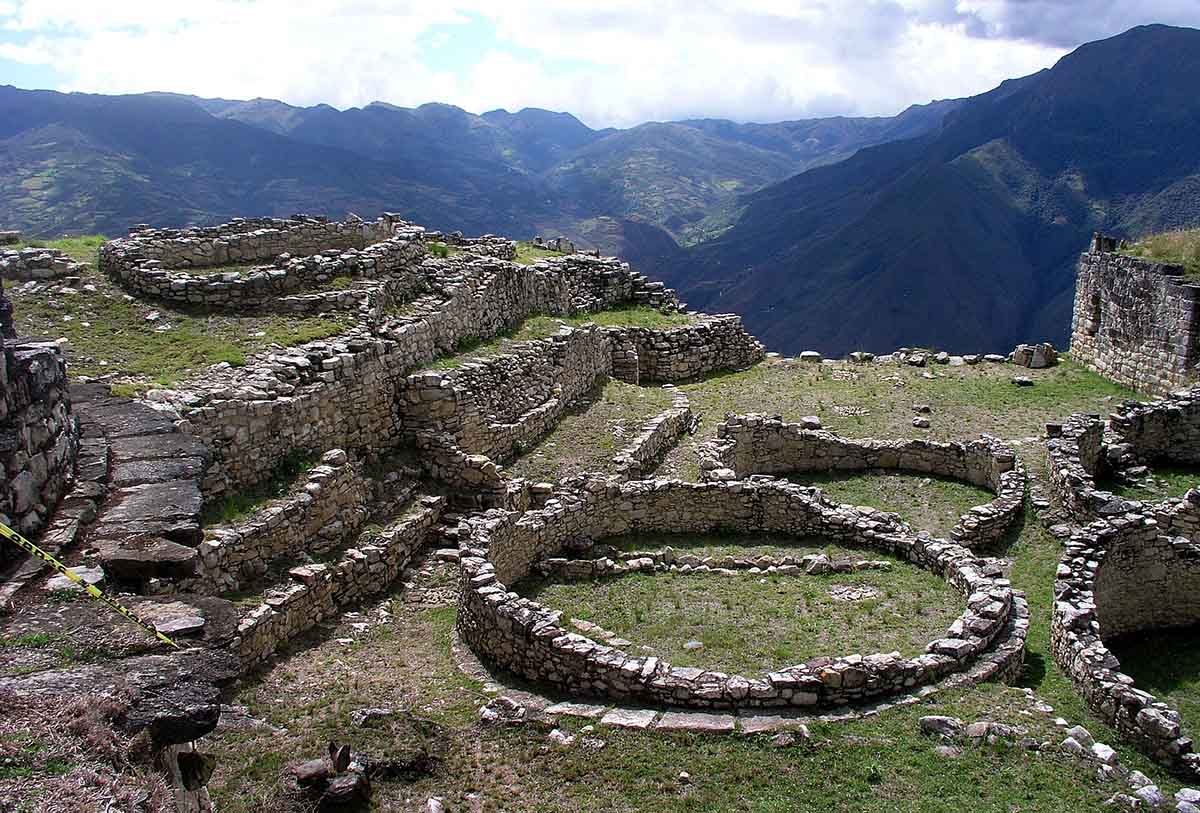
A sunny day at Kuelap. Image: File:P1011081mod by JYB Devot, used under CC BY-SA 4.0 / Compressed from original
There is a wealth of natural and historical wonders in Chachapoyas, but they are currently under-appreciated due to the remoteness and limited infrastructure. Right now, Kuelap is Peru’s best kept secret. Are you up for an adventure?
Travel through time and get a taste of pre-Inca history on a fully customizable Peru tour package. Contact us to chat with an expert Travel Advisor to plan your dream trip to Kuelap!



Email: [email protected]
Sign up to receive our newsletter for great articles, stunning photos, and special deals.